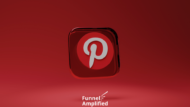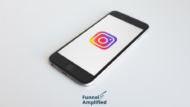Twitter is dead, they say. But, make no mistake, Twitter is not dead. With over 200 million daily active users, Twitter is alive. Yes, it has experienced some challenges and looks to soon be under new ownership, but with that many daily users and the average age of active users being in the upper 30s, Twitter is a social platform that you can have success on if you know how.
Twitter has Changed
One of the first things that you need to know about Twitter before creating your digital prospecting cadence strategy is that Twitter has changed significantly over the past several years, and it will continue to change. It may not be obvious that Twitter has changed because the look and feel of the platform has remained mostly unchanged, minus a few small changes and occasional new features. But, make no mistake, Twitter has changed.
More is not Better
In the big growth phase of Twitter, more tweets were almost always better. Brands and influencers took advantage of this. In fact, our marketing team took advantage of this to grow their own personal brands. Automation was king. Twitter users and brands would schedule out many tweets per day, often tweeting the same exact content several times per month or week.
Twitter made a lot of changes to their algorithm, and users changed how they engage on Twitter. Twitter began to reduce the reach of what they considered spam-like content, and they removed access to a lot of third-party automation software. And, users became aware of the high-volume tweet strategy and engaged less with accounts that tweeted too often or repeated content. Twitter recently announced they’re taking this further and will substantially reduce the reach of any repeat content.
So, bottom line, more is likely not better. Quality content is king, and real-time engagement drives most relationships and growth. You’ll likely have much more success tweeting a few times per week with original quality content than you will tweeting multiple times per day with low-quality non-engaging content.
Automation is Less Effective
This was partially covered above, but Twitter limited a lot of the automation that drove many users and brands growth over the past 10 years. Much of this effort was to stop obvious spam bots and tools that followed then unfollowed accounts as a growth strategy. The type of automation that is still part of Twitter is third-party schedule tools, but even those are far less effective.
Social networks want users live on their platform as often and for as long of a duration as possible. Advertisers pay them for your attention, and you have to be active and live on the platform for that strategy to work. Therefore, Twitter favors real-time content and engagement. This is not to say that automation can not still be a useful tool or that scheduling tweets is bad. In fact, you can not schedule tweets directly on Twitter. However, you will experience more success on Twitter if you prioritize posting and engaging live on the network.
Digital Prospecting Cadence on Twitter
Twitter was a popular prospecting platform 5-10 years ago because it was a bit of the wild west period in digitally prospecting. Twitter users were used to spam and self-promotional tweets and DM’s. Whereas on Facebook, sales pitches or promotional content and link sharing were always disliked by users, on Twitter it was mostly accepted. Or, at least, it was expected. But, as we stated above, times have changed.
Follow and Engage
Yes, you can still spam links out via DM and shoot your shot with every user within your reach, but you won’t have much success and you’ll damage your reputation. The best way toward digital relationship ROI is to engage organically with the content of your targeted prospects.
Follow Targeted Prospects
While on Facebook you would not want to send a friend request to someone you don’t know, nor is it effective to send blind LinkedIn connection requests, on Twitter, it is good practice to follow targeted prospects. Following your prospects is a good way to locate their content in the noisy feed of Twitter. It also puts you on their radar in a non-intrusive way. But, go slow with your following.
You want to limit the new amount of users you follow to somewhere between 10-25 in any given day, not following more than 4-5 in any given hour. This keeps Twitter from seeing you as a spam user. It will also keep you from relying on just following people as a strategy to drive your own follower growth and engagement. Following a user does you little good if you don’t take the time to engage with them, and therefore most of your active time on Twitter should be spent engaging.
Engage With Targeted Prospects
Twitter is a bit of a fly-by social network. The lifespan of a tweet is short because there is constantly new content going through every user’s feed. It is face-paced, which is part of the appeal. But, that can make it challenging to grow relationships with prospects. The key is to consistently engage.
On Twitter, it takes a few more touches to develop a connection with a prospect. The place to start is simply replying to tweets. Humor can often be a good tool in your replies. When possible, share your expertise in replies to tweets, but for the most part, keep it light-hearted. Interact as you would in person. As Candyce Edelen from PeopleGrowth would say, be human (watch the youtube video below for more insights on human-to-human selling from Candyce and Brandon Lee below). Show some personality. After several interactions (ideally back and forth), then consider a direct message or seek to connect with them off Twitter.
The key to engaging on Twitter in a capacity that will drive results is to have a plan and stick to that plan. You need to make the time, and utilize the tools and processes that will make it possible to engage with targeted prospects and develop relationships.
Summary
Twitter can be a great place to prospect. It is also a great tool to help stay up to date on the latest news in your industry. And, if you commit to time on the network, it can be a great platform for you to establish your authority within your industry and grow your or your company’s brand.









